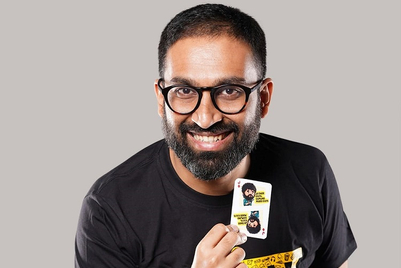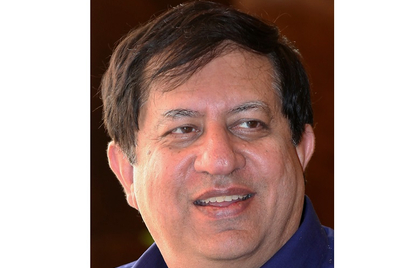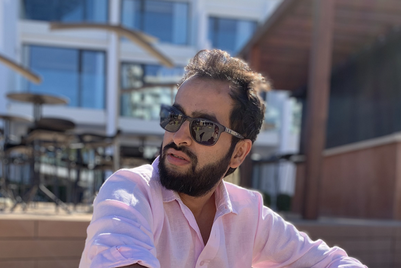
Trends come and go, but what the pandemic has done for the digital ecosystem is something there’s no turning back from. 2020-2021 has been a defining year in the way marketers evaluate digital channels for advertising, communication and collaboration.
There’s been an upsurge in digital natives, we’ve seen our parents evolve from struggling to upload a Facebook Display picture back in 2019 to shopping effortlessly on Amazon for essentials. Necessity is indeed the mother and thanks to her, content marketing has evolved rapidly.
Globally brands are evaluating ‘customer centricity’ with a new lens. The Deloitte 2022 Global Marketing Trends report defines ‘360 – degree engagement’ mantras in the light of the new world where people are constantly toggling between physical and digital, brands have to consider putting people at the centre of their strategies.
Let’s look at the five top trends you could capitalise on immediately.
Consumers will push brands more and more to adopt Short Format video as a key cornerstone of marketing
Brands are purely experimenting with short-format videos on Instagram and TikTok. However, looking at the growth in MAUs across apps like Moj, Takatak, Sharechat – you can see a need for brands to chart out a strategy for content where we don’t compromise on the true experience of short-form content.
The biggest challenge most brands face is a dilution of messaging and/or fighting the 30-second duration where there’s just too much to deliver for the creator.
I see this as an opportunity for advertisers to create differentiation as they craft stronger frameworks within which creators can play the role of advocates while retaining their true content form and language.
We’ve seen as far as hashtag challenges go. What we have to see and I think we will get to see, are fireworks through creative thinking tapered to maximising reach via. short-form video deployment. We can’t look at it as a tool for amplification but as an avenue for creation.
Thanks to Metaverse, we’ll be all studying AR/VR more closely
It is said that Metaverse will transform social media interactions into virtual social spaces. A real-time 3D virtual environment that uses mixed reality techniques to make this hyper-real alternative world the next stop for advertisers.
I recently saw an app that is modelled after the most loved spot in Delhi, Connaught Place, as a virtual meet up game. I was completely blown away by this. Imagine the possibilities if we could bring consumers into the fold of virtual shopping experience - very black mirror but truly possible in the next couple of years. But will it be adopted by a country like India where most of our audiences are still tech-diffident? A question for us to unravel in the coming months.
In the meantime, we must move beyond looking at AR filters as brand posters, look at them as rich opportunities to be part of our consumer’s social spheres online. Most brands look up to Netflix and Disney, and don’t decode the reason for their success. We have to dig into our consumer’s use of AR - where they interact with it, how they interact and then choose the right part of our brand narrative to deliver through it. Open Instagram, see filters that change your appearance - how they can be a rich place for beauty brands. See filters that are gamified, they can be a great space to start introducing loyalty programs.
In a gamer’s world, a deep integration within an augmented gaming experience would be the best versus in the world of beauty. A simple AR filter that allows them to create more content with your product works the best.
I see brands sharpening their adoption of augmented formats, to be able to grapple with AR/VR innovations of the future.
Brands are realising how important it is to be authentic:
It had been many years to campaigns that didn’t stop at messaging and went on to create grass-roots impact. Last two years, we’ve seen brands go above and beyond in ensuring they stand for something or create actual impact. More so globally, than in India but for brands looking to build a relationship with the digital natives, it becomes an absolute necessity.
In 2020, Kinnect was able to turn the wave of torment against TikTok’s brand image, overnight with the #MatKarForward PSA - timed perfectly to deliver a message that benefited the country.
Authenticity is a new brand metric: most global brands are coming to terms with the higher level of accountability expected by customers; Indian brands will begin to feel the onslaught too. We have seen brands being called out far more aggressively for tokenism in the last year.
We all saw beautiful examples at the Cannes Lions 2021 of how brands opted for empathetic marketing this year too, despite lockdowns easing-so they continue to build that they don’t get labelled opportunistic.
The next generation of shoppers will hold us more accountable for what we put out there. We need to be conscious of how our philosophy as a brand translates into actions we take - be it our packaging, our advertising or how we connect with the consumer. The onus on us will be bigger - are we green enough? Are we responsible enough? Are we giving back to the community?
This also means a great opportunity to build brand advocates. What Heineken did by buying shutters instead of billboards of local liquor shops became a rage because advocacy is borne out of natural respect.
Social commerce will make way for more accountable ad-spends
In-stream shopping on Sharechat, Instagram shop, live shopping on YouTube- Knowing that video is the best way to engage, marrying purchase with the format is a revolutionary solution. Brands can make the most by adopting channels that allow them to capture high intent consumers as they perhaps watch product reviews, influencer content or even push advertising.
More and more platforms are adapting their UI to marry dynamic content formats with shoppable experiences. This in turn also provides us with the opportunity to learn about consumer behaviour with finer metrics. Finally, a format that becomes overtly accountable - something that a lot of brands have been seeking from digital creatives.
ROI driven brands will surely take to social commerce - like e-commerce giants, or FMCG brands looking to lead in with product first communication.
Branded content formats will eat more out of our marketing budgets
Branded content IPs like FashionUp by Amazon, Myntra Fashion Superstar -content is paving the way for purchase. Myntra live rolled out on November 21, facilitating social and discovery commerce in-app. In fact, the brand plans to roll out 1000 hours of content next year.
I foresee content being reimagined by brands in a whole new manner this year. In 2020 Nexa Music was born - a first of its kind content IP that provides a platform to original English music.
With branded IPs, you deliver entertainment yes but most importantly highlight the kind of experiences, principles and brand voice you embody. At Kinnect, we create Friday’s with Alexa to build affinity for Alexa - a simple conversation. The Instagram Live IP brought together fun guests who advocate their love of the product while unlocking new things it could do!
I have been seeing more and more asks from our brand partners to crack open this super fertile territory to build brand loyalists.
(The author is VP - North, Kinnect)


.jpg&h=334&w=500&q=100&v=20250320&c=1)
.jpg&h=334&w=500&q=100&v=20250320&c=1)

.jpg&h=334&w=500&q=100&v=20250320&c=1)


.jpg&h=334&w=500&q=100&v=20250320&c=1)









.jpg&h=268&w=401&q=100&v=20250320&c=1)

